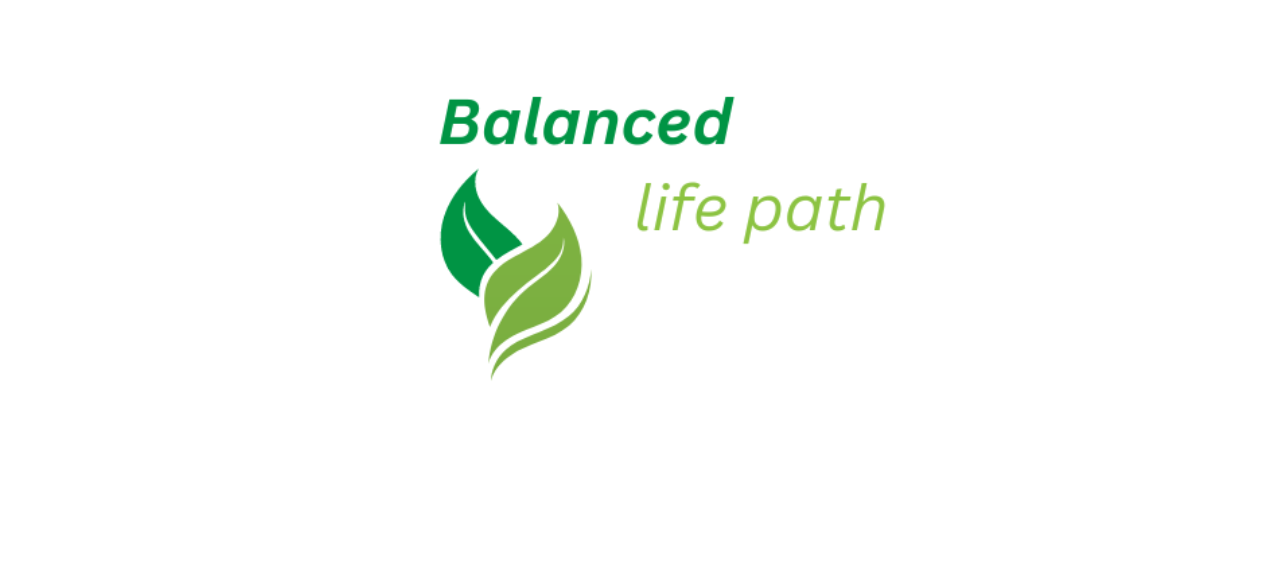In today’s fast world, it’s easy to feel overwhelmed. Daily pressures and unexpected challenges can sneak up on us. They affect our mood and mental health more than we think.
Have you ever felt tension in your shoulders after a long day or racing thoughts at night? These feelings highlight the need for effective stress relief. Understanding and managing stress is key to a balanced life.
By exploring different stress management techniques, we can take back control. We can improve our relationship with ourselves and the world. It’s all about finding the right approach for mental wellness.
Key Takeaways
- Stress management is essential for achieving mental wellness.
- Recognizing the signs of stress is the first step toward healing.
- Implementing effective stress relief strategies can improve quality of life.
- Holistic approaches often yield the best results for mental health.
- Building social support networks can enhance coping mechanisms.
- Regular mindfulness and physical practices can significantly reduce stress levels.
Understanding Stress and Its Impact on Mental Health
Stress is a big deal for our well-being. It comes from many places, like work or personal life. Our body’s stress response can affect our health a lot.
The Science of Stress
Stress makes our body go into “fight-or-flight” mode. This means it releases hormones like adrenaline and cortisol. But, too much stress can harm our mental health.
Effects of Chronic Stress on Mental Wellness
Long-term stress can make us feel anxious or depressed. It changes our brain, affecting how we feel and think. Spotting chronic stress signs is key to staying balanced.
| Signs of Chronic Stress | Potential Mental Health Effects |
|---|---|
| Insomnia | Increased anxiety and irritability |
| Fatigue | Depression |
| Difficulty concentrating | Memory problems |
| Physical symptoms (headaches, stomach issues) | Overall decline in mental wellness |
Managing chronic stress is important for our mental health. Knowing about stress helps us take care of ourselves better.
Stress Management Techniques for Mental Wellness
In today’s fast world, finding good ways to manage stress is key for mental health. A holistic approach to stress relief uses many techniques for the mind, body, and spirit. By using practices that help with stress, people can build up against daily stress.
It’s smart to mix different techniques that fit your style. This makes a strong and flexible plan for managing stress.
Holistic Approaches to Reducing Stress
Holistic stress management sees how physical, emotional, and spiritual health are connected. Methods like acupuncture, yoga, and aromatherapy are great for calm. They help with stress and improve overall health.
Integrating Multiple Techniques for Best Results
To get the most out of stress relief, mix different techniques into your day. Combining mindfulness meditation with yoga is very beneficial. This way, you can make a plan that fits you and really helps with stress.
| Technique | Benefits | Complementary Techniques |
|---|---|---|
| Mindfulness Meditation | Enhances focus and reduces anxiety | Yoga, Deep Breathing |
| Acupuncture | Relieves tension and promotes relaxation | Massage Therapy, Herbal Remedies |
| Yoga | Improves flexibility and induces calm | Mindfulness, Deep Breathing |
| Aromatherapy | Boosts mood and reduces stress hormones | Massage Therapy, Meditation |
Adding these holistic techniques to your routine can lead to better stress relief and mental health. The important thing is to find the right mix for your life.
Mindfulness Meditation for Stress Relief
Mindfulness meditation is a powerful tool for reducing stress and improving focus. It helps us stay in the moment, lowering anxiety and boosting emotional health. Studies show it can change how we face everyday problems.
Starting a mindfulness meditation practice is easy and open to everyone. Here’s a simple guide to begin:
- Find a comfortable and quiet space: Choose a peaceful spot where you can focus without distractions.
- Focus on your breath: Listen to your breath, letting it anchor you in the present.
- Observe your thoughts: Notice any thoughts that pop up, but don’t judge them. Gently return to your breath.
- Start with short sessions: Begin with a few minutes a day. As you get used to it, you can increase the time.
Mindfulness meditation offers more than just stress relief. Regular practice leads to clearer thinking, emotional stability, and better stress handling. People who make mindfulness a part of their day often find they concentrate better and feel more hopeful about life.
Deep Breathing Exercises: A Simple Yet Effective Technique
Deep breathing exercises are key in stress relief. They are simple yet powerful. They help people connect with their bodies and reduce daily stress. Learning these exercises can greatly improve mental health.
How to Practice Deep Breathing
To do deep breathing exercises, follow these easy steps:
- Find a comfortable position: Sit or lie down in a quiet spot where you can relax.
- Place one hand on your chest and the other on your abdomen: This helps you check your breathing.
- Inhale deeply through your nose: Let your belly rise as you fill your lungs.
- Hold your breath for a moment: Let the oxygen spread before you breathe out.
- Exhale slowly through your mouth: Let your belly fall, releasing tension.
- Repeat several times: Do this for five to ten minutes to feel better.
When to Use Deep Breathing Exercises
Using deep breathing exercises can help in many situations, such as:
- Before big meetings or presentations
- When you’re feeling very emotional
- When you’re stressed or anxious
- Before bed to help you sleep better

Using these deep breathing practices can help manage stress. By making them a part of your daily life, you can improve your mental wellness for good.
Cognitive-Behavioral Therapy (CBT): A Structured Approach
Cognitive-behavioral therapy is a strong method to manage stress and improve well-being. It helps people change negative thoughts that lead to stress and anxiety. This therapy guides a step-by-step process to change thoughts and behaviors, leading to better coping skills.
Getting professional counseling is key for those wanting to use CBT for stress. Counselors offer support and help apply CBT principles. This ensures individuals get the most from this structured approach. With professional help, people can create strategies that fit their needs and improve mental health.
Many studies show CBT’s success in reducing stress and improving emotional control. It’s a valuable tool in mental health care.
| Key Aspects of CBT | Description |
|---|---|
| Identification of Negative Thoughts | Recognizing harmful thought patterns that contribute to stress. |
| Behavioral Change | Implementing strategies to replace negative behaviors with positive ones. |
| Skill Development | Acquiring coping skills for effective stress management. |
| Goal Setting | Establishing achievable objectives to track progress and maintain motivation. |
Yoga and Relaxation: Physical Practices for Mental Clarity
Yoga is a powerful way to find mental clarity through relaxation techniques. It comes from ancient traditions and is a holistic way to manage stress. Many studies show its benefits, making it great for stress relief.
Types of Yoga Beneficial for Stress Relief
There are several yoga styles that focus on relaxation and mental clarity. Here are a few:
- Hatha Yoga: This gentle style uses physical postures and breathing to help you relax and find peace.
- Restorative Yoga: It focuses on deep relaxation. You use props to support your body in long poses that calm your mind.
- Yin Yoga: This slow style targets connective tissues in long poses. It helps you think deeply and find mental calm.
- Vinyasa Yoga: It links breath with movement. This dynamic practice energizes your body and helps you focus, bringing clarity.
Trying out these yoga styles can help you find what works best for you. It’s all about finding the right fit for your relaxation and clarity needs.
| Yoga Style | Focus | Benefits for Stress Relief |
|---|---|---|
| Hatha Yoga | Physical postures and breath | Enhances relaxation and improves focus |
| Restorative Yoga | Deep relaxation | Reduces anxiety and promotes tranquility |
| Yin Yoga | Slow-paced postures | Encourages mental calm and introspection |
| Vinyasa Yoga | Breath with movement | Increases energy while providing focus |
Adding these yoga styles to your routine can improve your mental clarity and stress management. Start your yoga journey and find peace in your mind.
Exercise for Stress Relief: Energizing Your Mind and Body
Moving your body every day can really boost your mental health. Doing exercise to reduce stress has quick and lasting effects. Starting a regular workout routine can help you feel less tense and more positive. Knowing which exercises help with stress can motivate you to start living healthier.
Types of Exercise That Alleviate Stress
There are many ways to exercise that help with stress. Here are some popular ones:
- Cardiovascular exercises: Running, cycling, or swimming gets your heart rate up and releases happy hormones.
- Strength training: Doing weights or resistance exercises can make you feel stronger and more confident.
- Yoga: Yoga mixes stretching with mindfulness, making it great for reducing stress and relaxing.
- Team sports: Playing with others can help you make friends and enjoy the benefits of team exercise.
Creating a Regular Exercise Routine
Having a regular exercise plan can make a big difference. Here are some tips to help you:
- Set realistic goals: Start small to avoid feeling too stressed.
- Mix it up: Try different exercises to keep things fun and interesting.
- Schedule workouts: Treat them like important appointments to stay committed.
- Track progress: Keeping a record of your achievements can keep you motivated.
- Find support: Working out with others can make it more enjoyable and help you stay on track.
Understanding the physical activity benefits of exercise can change your life. It can lead to clearer thinking and better overall well-being.
Journaling for Self-Reflection: Harnessing the Power of Writing
Journaling brings many journaling benefits that help us discover ourselves and clear our minds. It’s a way to reflect on our thoughts and feelings safely. Writing regularly can also help us manage stress and boost our mental health.
To start, pick a cozy spot to write and set aside a few minutes each day. You might use prompts like:
- What emotions did I experience today, and why?
- What am I grateful for right now?
- What challenges did I face, and how did I respond?
- What are my goals for this week?
These prompts can help guide your thoughts and lead to deeper insights. Writing for mental health can really help us understand and grow. Putting our thoughts on paper can make a big difference in how we feel emotionally.
As you keep writing, journaling will likely become a key part of your self-reflection. It will help make your journey to emotional strength clearer and more defined.

Time Management Strategies to Reduce Overwhelm
Good time management is key to fighting overwhelm. By focusing on what’s important, you can organize your day better. This makes you more efficient and clear-headed. Learning these strategies can really improve your life.
Using scheduling tools is a smart way to manage time. Whether it’s a digital calendar or a planner, it helps you see what you need to do. You can plan time for work, breaks, and fun. This helps you have a balanced day.
- Identify Priorities: Make a list of tasks by how important and urgent they are. This way, you tackle the most critical ones first.
- Set Realistic Goals: Break down big projects into smaller steps. This makes them less overwhelming.
- Create Time Blocks: Set specific times for different tasks. This helps you stay focused and efficient.
Using these strategies helps you feel in control. It also lets you adjust your plans as needed. This keeps you on track with your goals.
| Time Management Strategy | Description | Benefit |
|---|---|---|
| Prioritization | Identifying urgent and important tasks | Helps focus efforts on what truly matters |
| Scheduling | Using tools to plan daily and weekly tasks | Provides a visual layout of commitments |
| Setting Goals | Breaking tasks into smaller, achievable steps | Makes large projects feel manageable |
| Review | Regular assessments of task progress | Allows for adjustments and improved efficiency |
By using these time management tips, you can cut down on overwhelm. This makes your life more productive and enjoyable. Making these strategies a part of your daily routine turns planning into a powerful tool for success.
Building Social Support Networks: The Importance of Connection
Strong social support networks are key to managing stress and improving mental health. Building and keeping meaningful relationships offers emotional support when we need it most. Being part of a community not only builds resilience but also gives us a sense of belonging, which is vital for our mental well-being.
How to Foster Meaningful Relationships
To build strong relationships, be true to yourself and communicate openly. Here are some important tips:
- Prioritize quality time: Spend time doing things together that you both enjoy, like hobbies or just hanging out.
- Be an active listener: Really listen to what others say and feel to make your connections deeper.
- Express gratitude: Say thank you to others for their help and support to keep relationships positive and strong.
Utilizing Social Networks for Support
Social networks are great for finding community support. Here are some ways to use them effectively:
- Participating in local events: Join in on community events, workshops, or volunteer work to meet new people.
- Using online platforms: Look for social media groups or forums that match your interests to connect with others who share your passions.
- Reaching out proactively: Don’t be afraid to ask for help from friends and family when you need it. It helps build stronger bonds and encourages others to support you too.
Building a strong social support network boosts resilience and improves mental health. By nurturing meaningful relationships and engaging with your community, you can handle stress better and avoid feeling lonely.
Conclusion
We looked at many ways to manage stress and improve mental health. Techniques like mindfulness meditation and deep breathing help calm the mind. Yoga and exercise boost energy and clear thinking.
These methods are easy to add to your daily routine. They help everyone find balance and reduce stress.
It’s also key to value social connections for mental wellness. Having supportive friends and family offers emotional support. This support helps us stay strong during tough times.
By using these stress management techniques, we can improve our mental health. Reflecting on our stress levels and using these practices can lead to a healthier life. Start your journey towards a more mindful and resilient life today.




I’m definitely going to share this with my friends. Thank you for breaking down complex concepts so clearly. This article is a treasure trove of information! I enjoyed reading this and learned something new. I’m definitely going to share this with my friends. I’m bookmarking this for future reference. The content in this blog is truly eye-opening. This article is a treasure trove of information! Thank you for breaking down complex concepts so clearly. This blog stands out among others in this niche.
Thank you so much for your thoughtful and kind words! I’m thrilled to hear that you found the article helpful and insightful.
Can you be more specific about the content of your article? After reading it, I still have some doubts. Hope you can help me.
Thank you for your sharing. I am worried that I lack creative ideas. It is your article that makes me full of hope. Thank you. But, I have a question, can you help me?
Of course! I’m really glad to hear that the article gave you hope. Don’t worry about lacking creative ideas — they come and go, and sometimes all we need is a little nudge in the right direction. I’d be happy to help with any questions you have! What’s on your mind?